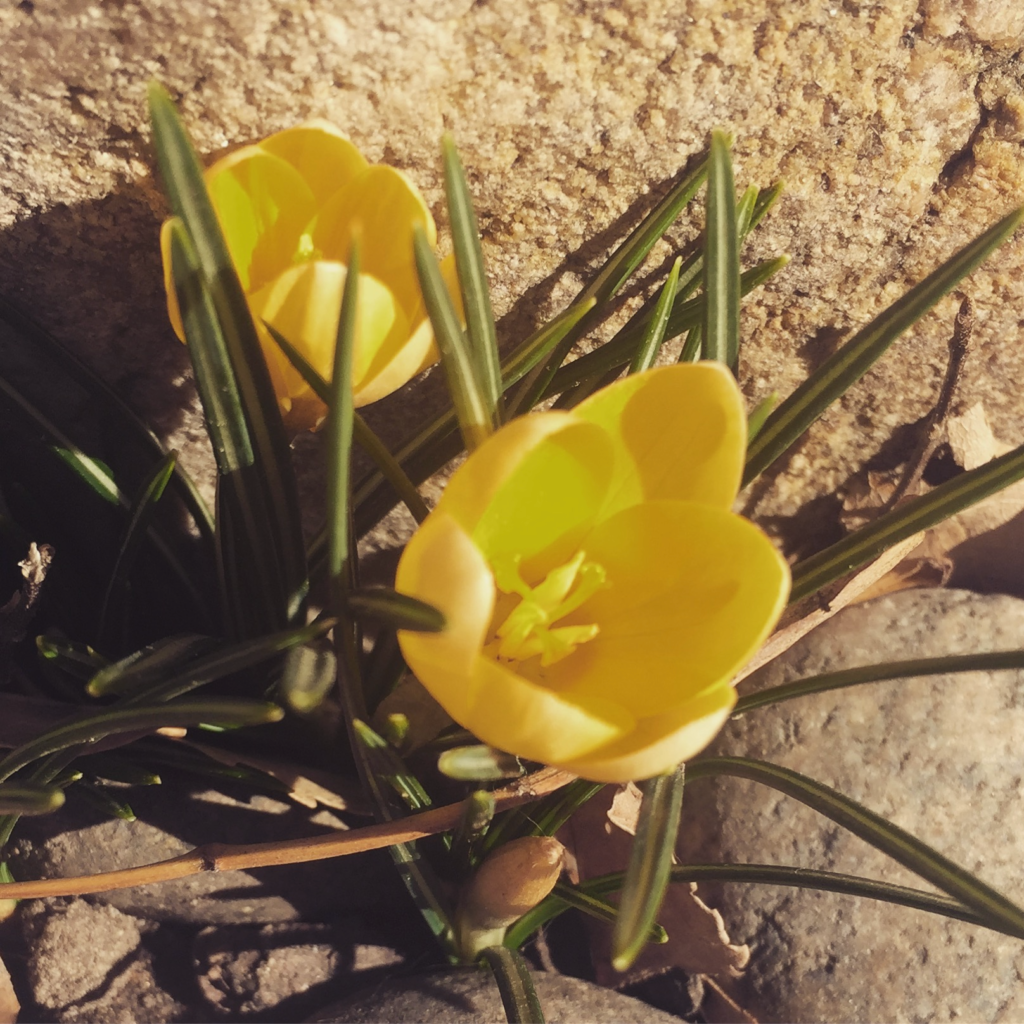The crocus beckons like homemade liqueur—
Marion McCready’s poem Look to the Crocus.
each one a glassful of sunlight. The crocus is a soft word in my ear

Today is the official first day of spring, but the crocus has been blooming for a couple of weeks, and the grape hyacinth is next. I usually plant sweet pea (Lathyrus odoratus) seeds on St. Patrick’s Day, but this year I am late; it is supposed to snow again.
Every spring, I wish I had planted more spring bulbs. I buy them and then forget to get them in the ground or wait until it’s too late. Next fall, I remind myself. It’s hard not to feel hopeful when early spring blooms in a garden.
“Gardening is the art that uses flowers and plants as paint, and the soil and sky as canvas.”
– Elizabeth Murray
Our Colorado garden has been a source of inspiration and creativity for me for the last twenty years. Many of my early poems that felt effortless have come to me with a spade in my hand or when weeding between rows. I have written about Early Girl tomatoes, Concord grapes, peaches that fell from my neighbor’s tree, dahlia bulbs, pumpkins, yucca blooms after a spring storm, the compost patch, spring onions, sage, and most recently had a haiku published that was written while sitting in my friend’s garden.
Like writing, planning and maintaining a garden has been a lot of work. It’s trial and error, success and failure but always a source of joy.
Before winter is over stacks of seed and bulb catalogs fill my mailbox. And I start looking forward to what each season will produce. I think the Latin scientific names are beautiful too. Grape hyacinth is Muscari armeniacum and Spiranthes spiralis is Autumn Ladies’-tresses.
But there’s also the creativity in the naming of the colors, Marmalade, Tower of Jewels, Goose Creek, Salmon Beauty.
How can you add the elements of garden design including form, scent, texture, and sound to a new or existing piece of writing? Get inspired by Poets.org’s selection of Poems about Gardens.
Now get back to work!
Lovingly,
The Writing Nag

